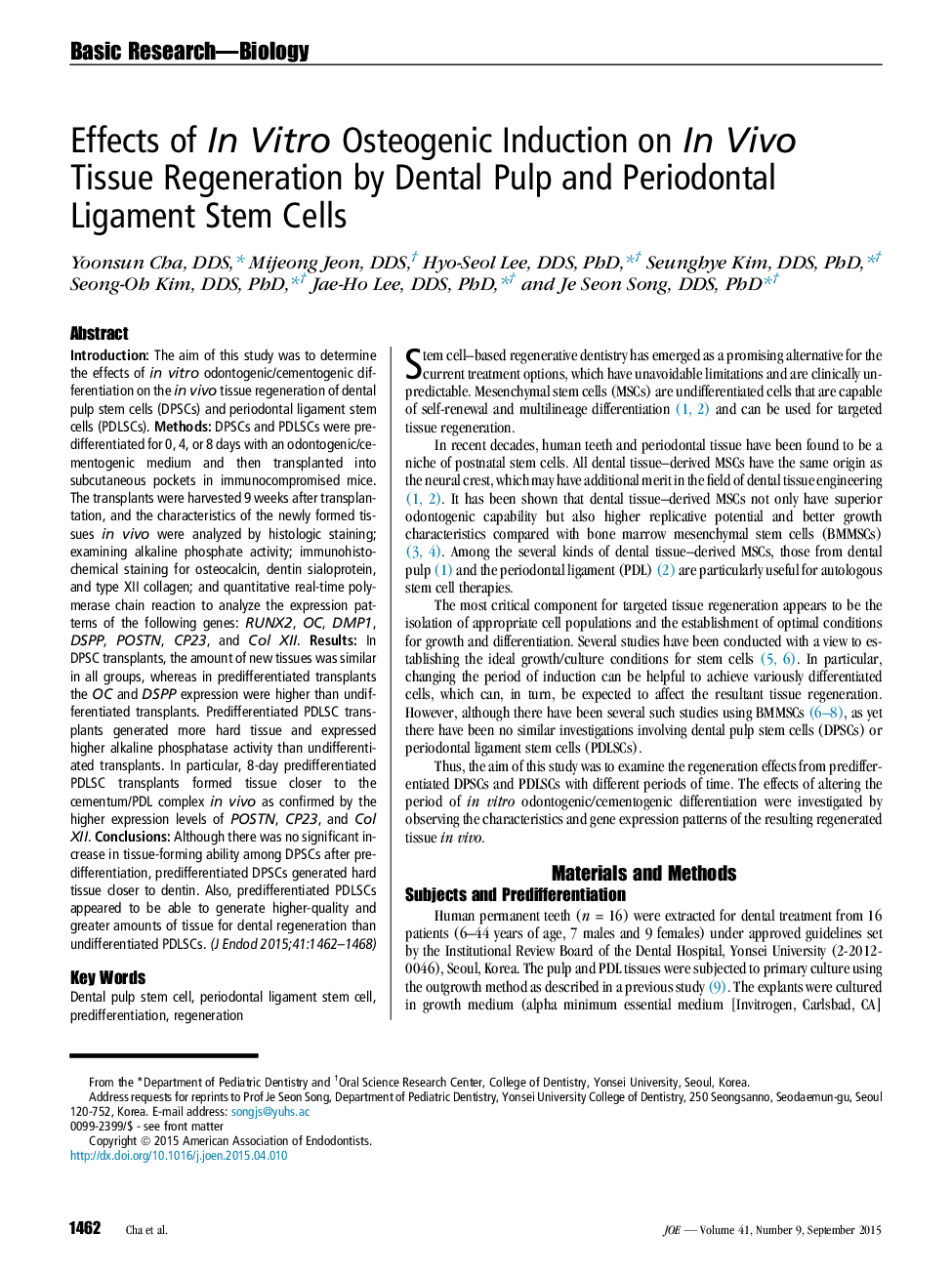| Article ID | Journal | Published Year | Pages | File Type |
|---|---|---|---|---|
| 3146593 | Journal of Endodontics | 2015 | 7 Pages |
•The aim of this study was to determine the effects of in vitro osteogenic induction on the in vivo tissue regeneration of dental pulp stem cells (DPSCs) and periodontal ligament stem cells (PDLSCs).•The effect of predifferentiation for adequate periods in vitro on dental tissue regeneration in vivo was examined in this study. Although no significant increase in hard tissue–forming ability was conferred by predifferentiation of the DPSCs, predifferentiated DPSCs generated hard tissue closer to dentin.•Predifferentiated PDLSCs appeared to be able to generate higher-quality and greater amounts of tissue for dental regeneration than undifferentiated PDLSCs.
IntroductionThe aim of this study was to determine the effects of in vitro odontogenic/cementogenic differentiation on the in vivo tissue regeneration of dental pulp stem cells (DPSCs) and periodontal ligament stem cells (PDLSCs).MethodsDPSCs and PDLSCs were predifferentiated for 0, 4, or 8 days with an odontogenic/cementogenic medium and then transplanted into subcutaneous pockets in immunocompromised mice. The transplants were harvested 9 weeks after transplantation, and the characteristics of the newly formed tissues in vivo were analyzed by histologic staining; examining alkaline phosphate activity; immunohistochemical staining for osteocalcin, dentin sialoprotein, and type XII collagen; and quantitative real-time polymerase chain reaction to analyze the expression patterns of the following genes: RUNX2, OC, DMP1, DSPP, POSTN, CP23, and Col XII.ResultsIn DPSC transplants, the amount of new tissues was similar in all groups, whereas in predifferentiated transplants the OC and DSPP expression were higher than undifferentiated transplants. Predifferentiated PDLSC transplants generated more hard tissue and expressed higher alkaline phosphatase activity than undifferentiated transplants. In particular, 8-day predifferentiated PDLSC transplants formed tissue closer to the cementum/PDL complex in vivo as confirmed by the higher expression levels of POSTN, CP23, and Col XII.ConclusionsAlthough there was no significant increase in tissue-forming ability among DPSCs after predifferentiation, predifferentiated DPSCs generated hard tissue closer to dentin. Also, predifferentiated PDLSCs appeared to be able to generate higher-quality and greater amounts of tissue for dental regeneration than undifferentiated PDLSCs.
